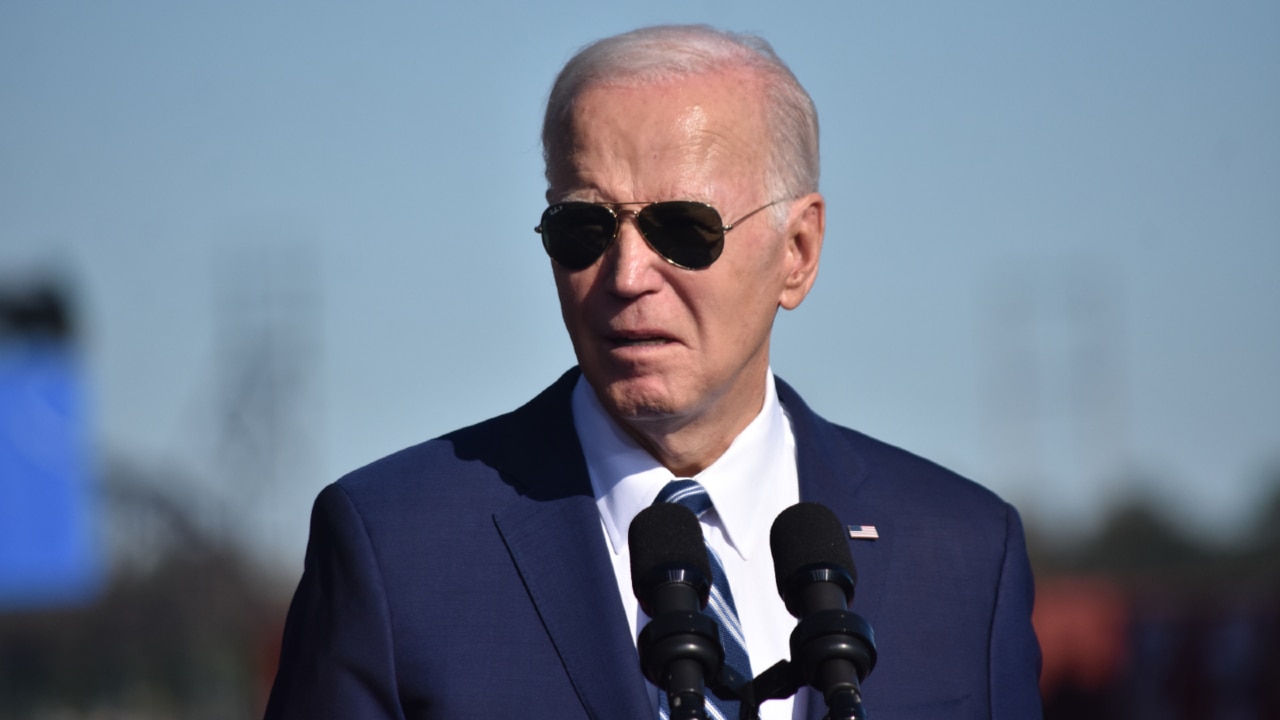Risk of bigger shift away from cuts by US policy makers
Already jittery after unexpectedly stronger US jobs data lifted bond yields, investors are unlikely to have much tolerance if inflation shows a lift.

Business
Don't miss out on the headlines from Business. Followed categories will be added to My News.
It’s a big week for markets with US CPI data and a Federal Reserve meeting at the top of the list and some risk of smaller rate cut projections.
Already jittery after stronger-than-expected US jobs data caused a sharp rise in bond yields, investors may have low tolerance for an upward surprise on inflation. Core inflation is expected to remain at 0.3 per cent month on month but slow to a three-year low of 3.5 per cent year on year.
While the S&P 500 stayed near record highs, the Russell 2000 small caps index dived to a five-week low as the 10-year Treasury bond yield jumped 15 basis point to 4.43 per cent in its biggest one-day rise in two months, hinting that small caps are more sensitive to high-for-longer interest rates.
Also in the firing line were commodities and currencies. The LME index dived 3.6 per cent on Friday and the Aussie dollar fell 1.3 per cent as the US dollar index jumped to a six-week high.
Australia has NAB’s monthly business survey on Tuesday and employment data on Thursday.
Also on tap are Apple’s Worldwide Developers Conference and Tesla’s annual shareholder meeting. The Australian sharemarket was closed Monday due to the King’s Birthday public holiday.

Soon after the US CPI data on Wednesday, markets get revised US interest rate and economic projections from the powerful Federal Open Market Committee early Thursday Australian time.
The FOMC is widely expected to keep the Fed funds rate target range at a decade high of 5.25-5.5 per cent for a seventh consecutive meeting this week.
After higher-than-expected inflation in the first three months of the year, FOMC officials noted a “lack of further progress” on inflation. While still talking about interest rate cuts, they needed “greater confidence” that inflation was “moving sustainably toward 2 per cent” before cutting.
Still, markets reacted negatively on Friday after the US reported monthly jobs growth of 272,000 versus 180,000 expected, and average hourly earnings rose 4 per cent on year versus 3.9 per cent expected, although the unemployment rate unexpectedly rose to a 28-month high of 4 per cent.
Last week’s hotter-than-expected jobs report, and the outcome of the CPI data this week, will feed into the outcome of the FOMC meeting. But overall the US economic data released since its last meeting has been weaker than expected and disinflation appears to be getting back on track.
The data is reinforcing economists’ views that monetary policy is restrictive enough despite loose fiscal policy and overall easy financial conditions amid tight credit spreads and buoyant stock prices.
A Bloomberg survey of US economists last week found the consensus was for the Fed’s revised “dot plot” to show two 25 basis point cuts in the Fed funds rate this year – in September and December.
Three months ago economists expected US rate cuts to start in June.
But the survey also showed economists were split between those expecting the revised dot plot to show two cuts and those expecting it to show just one cut this year.
After Friday’s US employment report, it could well be that by the time the FOMC’s revised dot plot is released at 4.30am AEDT on Thursday, the market is anticipating a 50 basis point increase in the median “dot” for 2024, although the CPI data will feed into the market’s expectation.
However, on the face of it, a 50 basis point lift in the 2024 interest rate projection would be treated as a “hawkish surprise” by the market.
Bloomberg’s survey also showed the median dot for 2025 rising to 4 from 3.75 per cent.
Revised economic projections are expected to show economic growth holding up around 2 per cent, an unemployment rate around 4 per cent and core PCE inflation falling to 2 per cent by 2026.
Economists also expect the FOMC’s long-run Fed funds rate projection to rise from 2.55 to 2.8 per cent.
But the “terminal rate” forecast for the Fed funds rate is 4 per cent. The thinking is that US monetary policy must stay “somewhat restrictive” to offset the inflationary impact of loose fiscal policy.
Indeed the vast majority of economists believe that the US economy will continue to grow over the next 12 months, a far cry from 12 months ago when most were expecting a recession.
US rate rises will remain effectively off the table, while all upcoming meetings will continue to be “live” for potential rate cuts, according to Citi chief economist Andrew Hollenhorst.
While stronger-than-expected inflation and jobs growth may be seem like a hawkish setup for Wednesday’s FOMC meeting, he expects Powell to “dovishly emphasise the recent slowing in monthly core inflation and the continued rise in the unemployment rate”.
After two quarters of 2 per cent annualised core PCE inflation in the second half of 2023, Fed plans for a near-term rate cut were “disrupted” by Q1 core PCE inflation at 3.6 per cent annualised.
Fed officials “need to recognise” this by revising up their inflation forecasts, which will put upward pressure on their interest rate forecasts. Hollenhorst expects the median rate projection for 2024 to shift up by 25 basis points but says “the risk would be a median that shows only one cut in 2024”.
Still, he expects Powell to emphasise to raise concerns that the labour market will loosen more rapidly and to a greater extent than intended, based on factors like the rise in unemployment and the return of the ratio of openings to unemployed to pre-pandemic levels.
Powell is also likely to point to slower consumer spending and rebalancing labour markets to assert that rates at current levels are restrictive. So long as inflation continues to slow it will be appropriate to reduce rates to avoid an unnecessarily deep slowdown in growth, Hollenhorst said.
Originally published as Risk of bigger shift away from cuts by US policy makers



